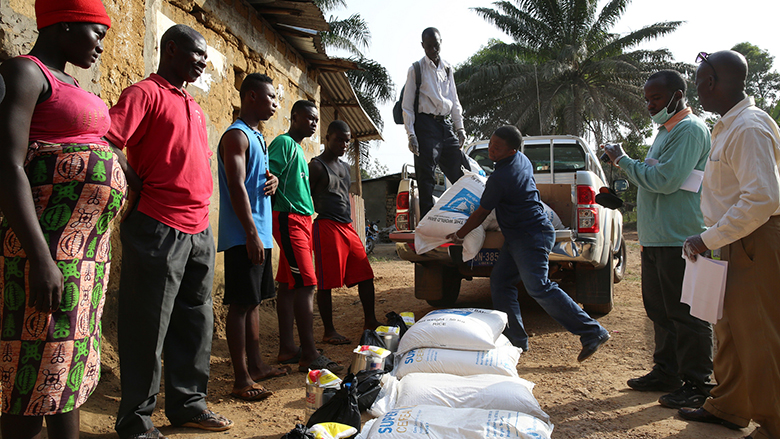As violent conflict surges, the world today faces multiple related crises - from forced displacement to food insecurity - that are driving up the need for humanitarian assistance. Yet budgets remain constrained, and humanitarian organizations are increasingly being forced to make tough choices, having to target resources as universal coverage of assistance programs becomes the exception rather than the rule.
In such situations, improving targeting can make the difference between life and death for some displaced people, says a new World Bank working paper, Optimal Targeting under Budget Constraints in a Humanitarian Context.
The paper aims to contribute to making targeting more effective when budgets are stretched. It utilizes Receiver Operating Characteristics (ROC) curves and related indices to devise a methodology for optimizing coverage, poverty reduction and leakage, focusing on social protection programs (cash transfers).
The proposed methodology can be used when policy makers work with coverage, poverty or budget targets. It looks at questions such as: (i) What is the budget required to reduce poverty (or mitigate famine) by X percent? (ii) What is the budget required to increase household coverage by Y percent? (iii) What is the coverage or poverty reduction we can obtain with a given Z budget? (iv) Can the program’s efficiency be improved by shifting the poverty line? The answers can help donors take funding decisions and humanitarian organizations make targeting choices.
As a case study, the paper uses the food voucher program administered by the World Food Programme (WFP) to Syrian refugees in Jordan in 2014, to show how this method can be applied, relying on available micro data collected by the United Nations High Commissioner for Refugees (UNHCR).
The paper cautions that this method cannot be applied in all contexts. Quality micro data is not always available and outcomes such as nutrition levels may be more important than poverty reduction in emergency situations.
But all humanitarian operations with budget limitations that use cash or food vouchers as a form of social protection face the same targeting challenges, and operations may need to rely on less accurate targeting criteria.
“As we work with UNHCR and partners to improve the quality of micro data, this paper implicitly shows that collecting income or consumption data can also lead to improvements in the measurement of outcomes and in the effectiveness of targeting,” said co-author Paul Verme, World Bank lead economist.
This work is part of the program “Building the Evidence on Protracted Forced Displacement: A Multi-Stakeholder Partnership." funded by UK aid from the United Kingdom's Department for International Development (DFID).

